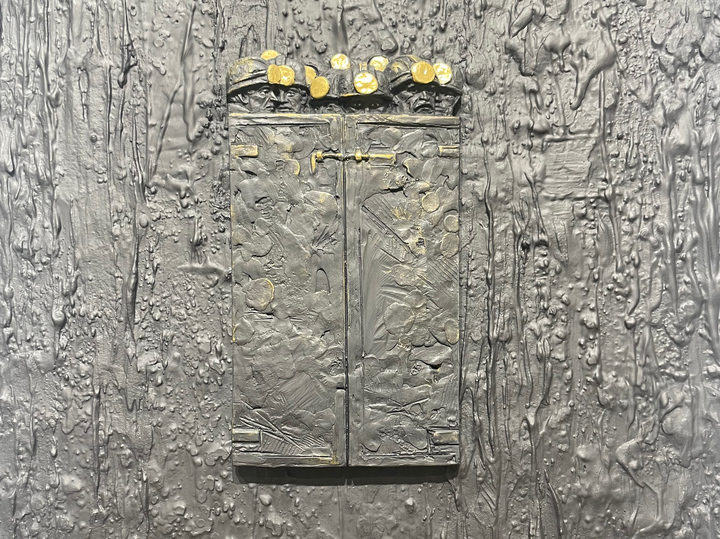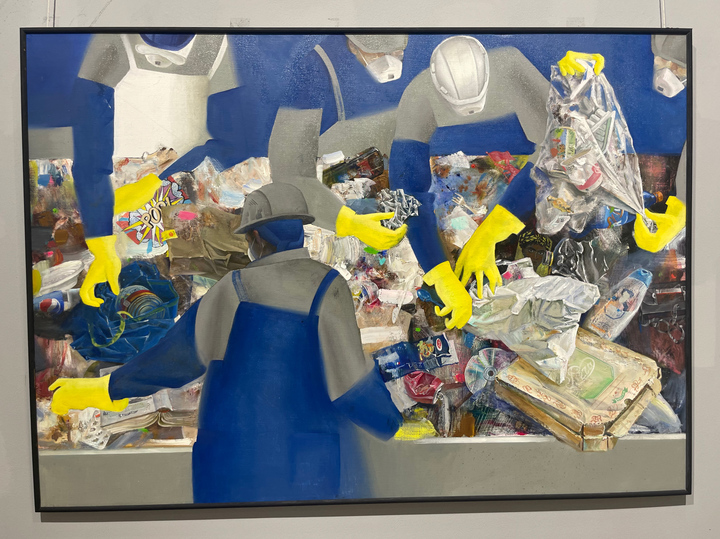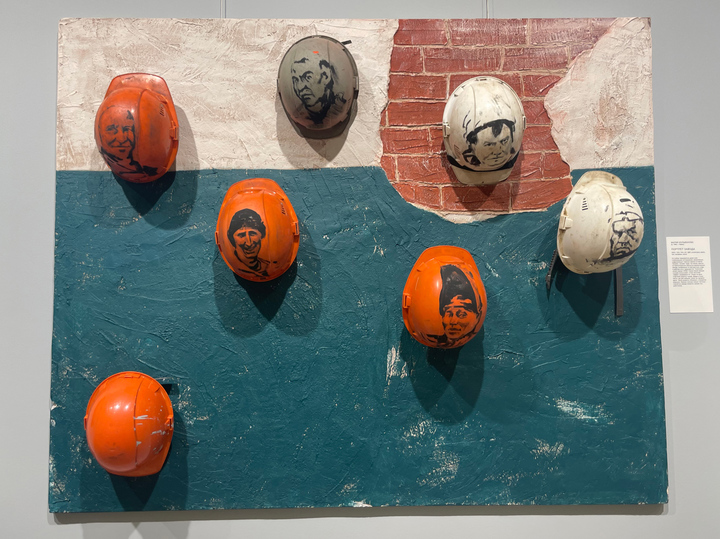The Tretyakov Gallery showed the art of labor: Madonna and the Rooster and the Miner’s Abyss
[ad_1]
Not some fictional factories or generalized images of workers, but very specific enterprises and people
The exhibition “The Art of Labor” opened in the Western Wing of the New Tretyakov Gallery. The topic is complex, largely due to the legacy of the Soviet era. There is a danger of slipping into the poster ideology of socialist realism, which by the end of the Soviet era made us slightly nauseous – due to its excessiveness and insincerity. However, the final project of the festival “Time, forward!” managed not to step on the old rake. No matter how strange it may sound, you relax at an exhibition about work. The life of hard workers – a focus on working nuances, professional humor – made up of paintings, art objects and sculptures, is told without feigned pathos and in a very human way.
Before many of these works appeared, their authors immersed themselves in the topic, traveling to arable lands and factories, and descending into mines. That is, we are not looking at some fictitious factories or generalized images of workers, but very specific enterprises and people. There are more or less successful works (in terms of technique, concept and execution), but they are all alive. This is not socialist realism, but rather a new round of industrial art, the sprouts of which sprouted in Russia at the dawn of the 19th century (peasant subjects of Venetsianov and Tropinin), blossomed on the wave of the Wanderers, acquired power and scale at the beginning of the 20th century along with the revolution in industry and art, and the main thing is in the minds. After the collapse of the USSR, they could not approach the most hackneyed topic of the socialist state for a long time. And yet this happened – largely thanks to the Ural Biennale, where enterprises and factories often became sites. However, here industrial art is not in the immediate vicinity of active production and not among the ruins of abandoned enterprises, but in classical museum halls.

It was assumed that the exhibition would occupy halls where one could take a circle and live the day in the rhythm of work, immersing oneself in the work process and pausing for rest. But for technical reasons, at the last moment it was necessary to move the exhibition to the neighboring halls – 16 and 17. Therefore, it was not possible to loop the labor theme, but the sections remained as planned. The project has four sections – “Labor. Characters”, “First/last scene”, “Process”, “Pause”. The same number of nominations: in each block, the best works were awarded first, second and third places. In total, there are about 200 works at the exhibition, some of them by little-known authors. All of them passed a big competition: they were chosen from 1.5 thousand applications sent this year from 400 cities in Russia. One of the winning works appeared on the cover of the catalog and the poster – an assemblage by 26-year-old artist from Tyumen Anastasia Lyulina.
The lower part of the canvas is draped with fabrics, so that the dress of the girl holding a rooster in her hands is voluminous and embossed, and the girl herself resembles the image of the Madonna, so often reproduced in art. There is a hint of Petrov-Vodkin in the style of the portrait – it can be read in her clear, glossy face with a red tint, the heroine’s head is covered with a white scarf, like the “Madonna” of the avant-garde artist. But the featureless gray background spoils the impression. There are more subtle things at the exhibition, and in very different styles.

For example, a Suprematist still life by Evgeny Mikhailov and Sofia Orlovskaya, where next to a clear, volumetric geometry you can find a teapot and a sickle. Or the delicate “Blue Ceramics” by Mariam Alibay, where a girl carefully polishes a dish while sitting in a blue-filled room, next to a large window, from where warm light penetrates the room through a light curtain. Or a funny miniature by Maria Davydova called “Rest of a Russian Man”: a country house surrounded by many garden beds is made of wire, plastic and natural materials in every detail. The summer resident himself is exploring an eccentric plant that grew on a path near the plantings, on which a lot of time and effort was clearly spent.

The painting “Harvest” by Katerina Feher is interesting: the clouds and rye in it seem to have been painted under the conscious or unconscious influence of Nicholas Roerich. “The Inner Courtyard” by Anastasia Nesterova is mesmerizing, where the factory entrance is expressively written in the contrast of purple and yellow and, despite the desertion, seems somehow familiar. The painting by Permian Maria Kolyvanova looks stern and avant-garde: on a canvas that replicates a factory wall, on which natural helmets with portraits of workers hang. This is abstraction, installation, and realism. The work of Alexei Chepashov is also avant-garde: on a black-black canvas there is a black cage with golden reflections, from which workers’ helmets can be seen. They descend into the mine – like into an abyss. The abyss is painted in black, as if oil were flowing through it, and the cage is sculpted with fingers so that the author’s fingerprints are visible. That is, the natural and man-made are reflected in technology – quite fresh and subtle. You look at the details, creative solutions, plots and… relax. Overall, it’s nice to see how others work.
[ad_2]
Source link






